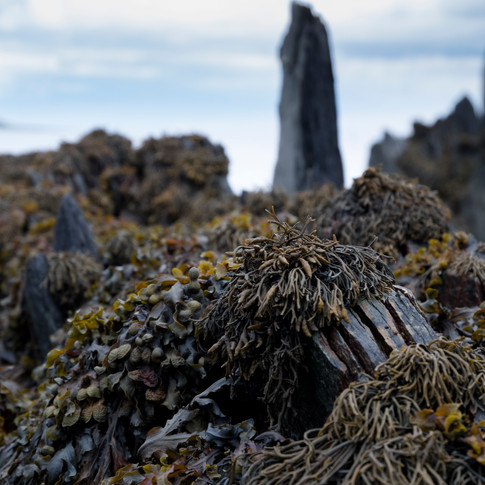Immerse yourself in the details...
- Kerry Lynn
- Aug 1, 2016
- 4 min read
I've always enjoyed getting close to the details of a place - the house is coming down with pretty stones and shells I've picked up around the place, and I'm always trying to get Aaron to take yet another picture of some fascinating lichen. Until yesterday I hadn't realised that I could turn this into a stand-alone hobby, and get so much more out of a location.
I've been feeling a bit tired with the pregnancy, and trying to set up our business lately, but I'm keen to keep going to get as much underway as possible before "José" shows up.
So yesterday, as a compromise between photography, and me being a lazy sod, we went to a lovely patch of coastline near Bangor, about 30 minutes drive from home.
It's one of those places I love because it's really easy to get to, and while the regular path is busy enough, as soon as you nip off the path, and down to the coastline, no-one ever ventures down there. You can chill out on a picnic blanket with the camera gear, and a book, and you have the place all to yourself.

This place is particularly special because of some strange stone enclosures right down by the shore. The regular path bypasses them, and there's no signage. I've done a lot of googling, and am still none the wiser as to what they were for. My best guess is that they were to keep sheep in one place while the farmer took a boat-ful of his flock back and forth to the Copeland Islands across the water. The islands were used by smugglers of spirits and tobacco until the twentieth century, which has a much more exciting pirate-y ring to it, though I can't imagine why they would have needed stone enclosures for their wares!
In between protecting the time lapse gear from the odd shower, I had another play with my new camera. Now that finding the basics on the camera, like aperture, ISO and shutter speed, are second nature, it's all a lot more enjoyable, so I was able to really get lost in the detail of where we were. We've been there a bunch of times, but this time I saw it in a way I've never seen before - I got so lost in the details that the place really came alive for me. Our day there was so much more memorable, and I feel like I really got to know that tiny little unique spot of the world...
Nice flowers, or bits of seaweed that I would barely have noticed before became fascinating once inspected closely with my zoom lens at 15 cm. It was energising to get so much out of the destination, and took my mind entirely off my tiredness, and it made me realise how important it is to really get down close to the details, and see every last bit.
It is so easy as an adult to gloss over the details around you, to get travel-blindness, and feel like you've see it all, but I think that if you can nurture the attention to detail of a child, the world continually rewards you with fascinating things to look at.
All of these pictures above were taken within a 10 foot radius, over the course of an hour or so yesterday, in an area that I've spent many hours in over the last year or so, and as I look at them, I feel genuinely surprised - I had never noticed this level of detail or variety in this spot before. I can't wait to take my camera out to some of my other regular haunts and see if I can re-discover them too.
How to get lost in the details
Take a camera - not necessarily anything fancy, but one that can focus pretty close (about 15 cm away). This forces you to really look
Get down low - sit down, kneel, even lie right down - you really want to get a bug's eye view
Concentrate on really seeing - not just "Oh there's a shell" but "Wow, look at the tiny little spots of red on this shell, and its perfect curves"
Listen - really listen. You will be able to hear bees that you hadn't seen, you can even hear limpet's shells scratching the rocks as they move if you listen hard enough
Take your time - If you're in a rush, you won't really be looking. When you get lost in the details, time will fly by and you'll notice an amazing amount of things that would otherwise have passed you by
Touch - as adult, we get used to wanting to keep our hands clean, but our sense of touch is really overlooked. Do you know what seaweed feels like? What about lichen? Go on, have a stroke - you'll enjoy it!






















